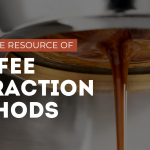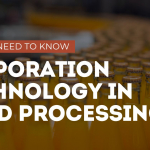Introduction to Drum Dryers: Backbone of Industrial Processing
Drum dryers represent one of the most efficient and versatile drying technologies in modern industrial processing. These robust machines stand as critical assets in production lines where consistent moisture removal and product quality are paramount. By utilizing heated rotating cylinders to remove moisture from liquid or semi-liquid materials, drum dryers transform raw inputs into shelf-stable, processable outputs with precise control over final moisture content.
For process engineers and plant managers across the food processing, chemical, and pharmaceutical sectors, understanding drum dryer principles isn’t merely academic—it’s essential for optimizing operations, reducing energy costs, and maintaining product integrity. As industries face increasing pressure to improve efficiency while maintaining stringent quality standards, drum drying technology continues to evolve, offering enhanced performance and specialized applications.
The Science Behind Drum Drying: Heat Transfer and Evaporation Mechanics
The drum drying process operates on fundamental thermodynamic and physical principles that enable efficient moisture removal. At its core, a drum dryer functions through conductive heat transfer—a more efficient mechanism than the convective heat transfer found in many other drying systems.
When a liquid or slurry material contacts the heated drum surface, several physical phenomena occur simultaneously:
- Conductive heat transfer: Heat energy transfers directly from the heated drum surface into the thin film of product. The metal drum walls (typically made of stainless steel or chrome-plated steel) provide excellent thermal conductivity.
- Phase transition: As the material reaches its boiling point, latent heat of vaporization drives the conversion of water molecules from liquid to vapor state.
- Vapor pressure dynamics: The increasing vapor pressure within the product facilitates moisture movement to the surface, where it can evaporate.
- Film formation and adhesion: Surface tension, viscosity, and material properties determine how the product adheres to the drum surface, forming a film of consistent thickness.
The efficiency of a drum dryer’s operation depends on maintaining optimal temperature gradients across the drum wall and product film. Internal steam pressure, typically ranging from 4-8 bar (58-116 psi), maintains drum surface temperatures between 120-170°C (248-338°F), though these parameters vary based on product sensitivity and desired outcomes.
The thermal efficiency of modern drum dryers can reach 85-90% when properly configured, making them among the most energy-efficient drying technologies for compatible materials.
Types of Drum Dryers and Their Operating Principles
The industrial marketplace offers several drum dryer configurations, each designed to address specific processing challenges:
Single Drum Dryer Systems
The single drum dryer represents the most straightforward configuration, featuring one rotating heated cylinder with application mechanisms that distribute the feed material evenly across the drum surface. As the drum rotates, a stationary knife blade (doctor blade) scrapes the dried product from the surface after approximately 75% of a complete rotation.
Single drum systems excel when processing:
- Free-flowing liquids with moderate to high solids content
- Materials requiring precise residence time control
- Products where thin-film drying preserves heat-sensitive components
Double Drum Dryer Technology
Double drum dryers employ two counter-rotating drums positioned in close proximity. The feed material enters the nip between the drums, forming a thin film on both heated surfaces. This configuration offers several advantages:
- Nearly doubled production capacity within a similar footprint
- More uniform product thickness across the drying surface
- Enhanced handling of viscous materials through the nip-feeding mechanism
- Improved heat transfer efficiency through dual-surface contact
Double drum systems often include adjustable drum spacing mechanisms to optimize film thickness based on product characteristics and desired moisture content.
Vacuum Drum Dryer Principles
For heat-sensitive materials common in pharmaceutical and specialty food applications, vacuum drum dryers offer a critical solution. By operating within a vacuum chamber, these systems reduce the boiling point of water, allowing effective moisture removal at significantly lower temperatures (often 40-60°C/104-140°F).
The vacuum drum dryer’s operating principle includes:
- Maintaining chamber pressure between 30-100 mbar absolute
- Facilitating flash evaporation at reduced temperatures
- Employing specialized vapor recovery systems
- Preventing oxidation through reduced oxygen exposure
While more complex and costly than atmospheric systems, vacuum drum dryers preserve thermolabile components such as bioactive compounds, vitamins, and specialized pharmaceutical ingredients.
Advantages and Limitations of Drum Dryer Technology
Key Advantages of Modern Drum Dryers
- Superior heat transfer efficiency: Conductive heat transfer through direct contact achieves up to 85-90% thermal efficiency, surpassing many alternative drying technologies.
- Precise moisture control: Drum dryers can deliver remarkably consistent final moisture content, typically within ±0.5% of target specifications.
- Gentle processing option: When properly configured, drum drying preserves product quality parameters better than spray drying for certain applications.
- Excellent scalability: From pilot-scale to industrial production, drum dryer principles remain consistent, facilitating smooth scale-up processes.
- Compact footprint: Drum dryers typically require 30-40% less floor space than equivalent-capacity fluid bed or spray drying systems.
Limitations to Consider
- Product adhesion requirements: Materials must form coherent films on the drum surface, limiting applications for non-adhesive substances.
- Batch-to-batch variability concerns: Changes in feed properties can impact film formation and drying characteristics, requiring vigilant process monitoring.
- Potential for thermal damage: High-temperature contact with metal surfaces can trigger Maillard reactions or denature sensitive components in some applications.
- Higher maintenance requirements: Doctor blades, drum surfaces, and feeding mechanisms require regular inspection and maintenance to ensure consistent performance.
Industrial Applications: Where Drum Dryers Excel
The versatility of drum drying technology has established its presence across diverse industries:
Food Processing Applications
In food manufacturing, drum dryers produce many familiar products:
- Instant mashed potato flakes (single or double drum systems)
- Pre-gelatinized starches for instant foods
- Fruit and vegetable purees for ingredient applications
- Dairy products including milk powders and protein concentrates
- Baby food ingredients requiring controlled processing
Pharmaceutical and Chemical Industry Use Cases
The pharmaceutical and specialty chemical sectors leverage drum dryer principles for:
- Active pharmaceutical ingredient (API) drying under controlled conditions
- Polymer processing and film formation
- Specialty adhesive production
- Enzyme and bioactive compound preservation
- Controlled-release excipient manufacturing
Environmental and Waste Processing Applications
Emerging applications include:
- Sludge processing and biosolid management
- Recovery of valuable components from industrial waste streams
- Processing of fermentation by-products
- Conversion of waste materials into value-added products
Factors Affecting Drum Dryer Efficiency and Product Quality
Process engineers must consider multiple variables when optimizing drum dryer operation:
- Feed characteristics management:
- Solids content (typically optimal between 15-50% depending on material)
- Viscosity profile across temperature ranges
- Surface tension and film-forming properties
- Presence of surfactants or other surface-active components
- Operational parameter optimization:
- Drum temperature control (typically ±2°C precision)
- Rotation speed (typically 2-15 rpm)
- Feed rate and distribution uniformity
- Doctor blade positioning and pressure
- Environmental factors:
- Ambient humidity effects on drying rates
- Air flow patterns around the drum surface
- System pressure (atmospheric vs. vacuum)
- Heat recovery implementation
- Material-specific considerations:
- Heat sensitivity thresholds
- Stickiness phase transitions
- Crystallization tendencies
- Final product density requirements
Recent Innovations in Drum Dryer Design and Technology
The industrial drying equipment landscape continues to evolve, with several significant innovations enhancing drum dryer performance:
- Advanced surface treatments: New ceramic and composite coatings increase wear resistance while improving release properties, extending drum life by up to 300%.
- Intelligent control systems: Implementation of machine learning algorithms that predict optimal operating parameters based on feed characteristics and desired outcomes.
- Hybrid drying technologies: Integration of drum drying with pre-concentration or post-drying technologies to create optimized processing trains for complex products.
- Enhanced energy recovery: Heat exchanger designs capturing up to 40% of waste heat from vapor streams, significantly improving overall energy efficiency.
- Modular drum dryer systems: Flexible configurations allowing rapid changeover between product types with minimal downtime.
Conclusion: Selecting the Right Drum Dryer for Your Processing Needs
When evaluating drum dryer technology for your facility, consider these essential factors:
- Match product characteristics to drum dryer type: Single drum for simple solutions, double drum for viscous materials, or vacuum systems for heat-sensitive products.
- Calculate total cost of ownership: Initial investment represents only 30-40% of lifetime costs, with energy consumption often dominating operational expenses.
- Evaluate versatility requirements: If your production involves multiple products, prioritize systems with rapid changeover capabilities and broad operating ranges.
- Consider automation integration: Modern drum dryers with comprehensive automation packages typically achieve 15-20% higher productivity than manually controlled alternatives.
- Plan for future capacity needs: Proper sizing should accommodate at least a 20% increase in production requirements to avoid premature replacement.
For process engineers and plant managers navigating the complex landscape of industrial drying equipment, drum dryers continue to offer an optimal balance of efficiency, product quality, and operational flexibility. By understanding the fundamental principles governing drum dryer operation, decision-makers can make informed choices that align with both immediate production requirements and long-term strategic goals.




